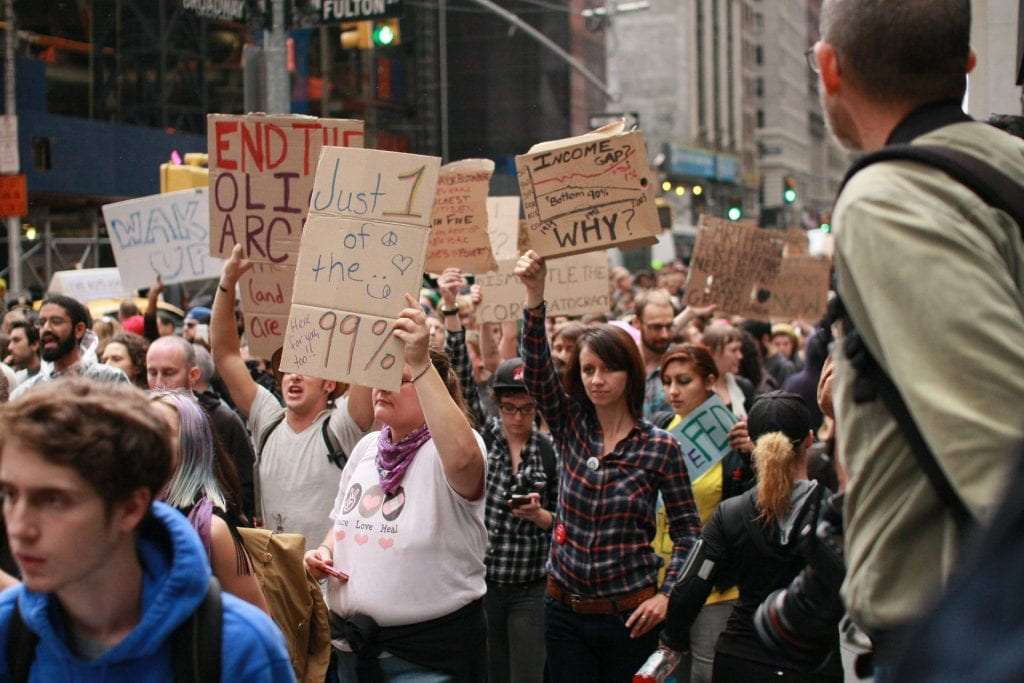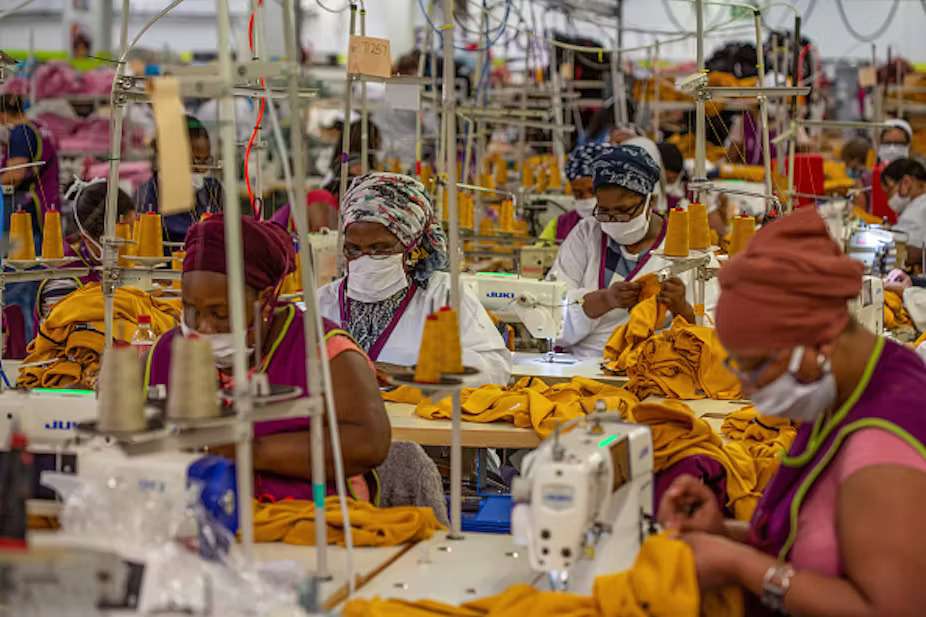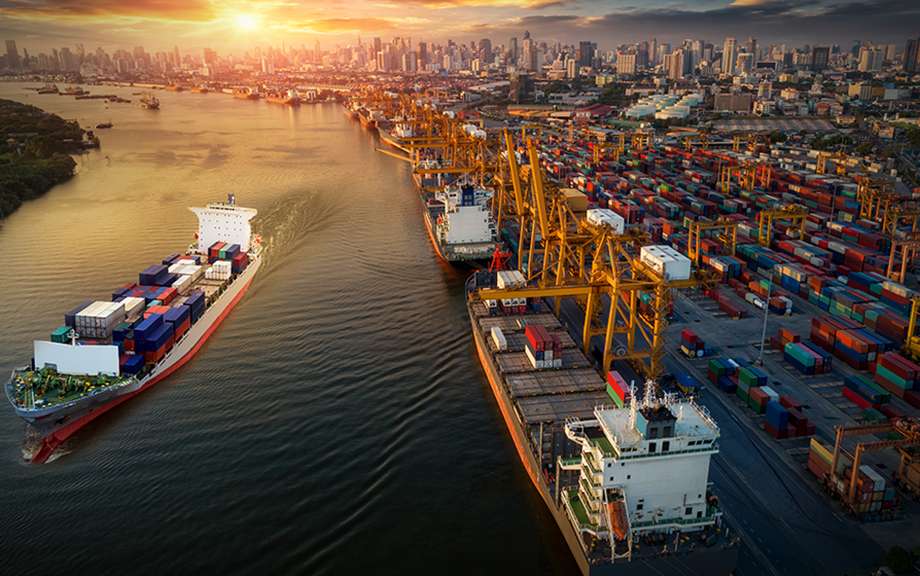Over the past three decades, two significant economic trends have emerged: the growth of globalisation and rising wage inequality. Globalisation and inequality result from policies promoting trade and foreign direct investment (FDI) liberalisation, deregulation, and technological advancement. Developing nations have been exposed to the effects of fast globalisation through international markets and competition.
Globalisation and inequality are, in many ways, linked to global development. One of the ultimate goals of sustainable development is poverty reduction. With the unprecedented entry of developing and low-income countries into global economic integration, the discussion about globalisation and poverty has heightened (Rahim et al., 2014). So, what is the impact of globalisation on inequality?

Source: Creative Commons
What is Globalisation?
Globalisation is the process through which nations and their economies become more interconnected. This is a result of flowing goods and services, capital, people, and ideas.
Through the process of globalisation, hundreds of millions of people are gaining access to new opportunities. Most human life is impacted by the expanding interdependence of global economies, and social and political dimensions. Trade and investment are also relevant factors (Ribeiro et al., 2020). Everything from improved global transportation and communication to global challenges are affected. This includes commerce and services, capital mobility, population growth, poverty, international migration, and more. However, the gap between the richest and poorest countries is widening and inequality within many countries is increasing.
the impact of Globalisation on wage inequality
Wage differences within a nation are a crucial determinant of overall income equality. Several proxies can be used to assess wage inequality. These include the wage gap between skilled and unskilled workers, the proportion of low-wage earners, the high-low decile or quartile ratios, or indices of wage dispersion (Ribeiro et al., 2020).

Source: Getty Images
Wage inequality captures earning inequality between individuals across educational categories, industry categories, occupational categories, and, more recently, across firms. Following this, the income gap has grown as nations have been more exposed to globalisation. Unfortunately, this has occurred through greater flows of goods, services, capital, and labour across international borders.
The top share of income inequality measures provides information on the proportion of a country’s total income held by those at the top of the income distribution. For instance, the term “top 1 per cent of income” refers to the portion of a country’s total income held by the highest 1 per cent of its income distribution (Pavcnik, 2011).
economic growth, globalisation and inequality
Moreover, the United States, Europe, and Japan are now 100 times wealthier than Ethiopia, Haiti, and Nepal (on average). This is primarily because the former has experienced economic growth over the past century while the latter has not. At the beginning of the 20th century, this disparity was approximately 9 to 1. Rapid growth in India and China, two of the world’s most vast and poor nations, indicates that global inequality is beginning to decrease. The decline, however, is from astoundingly high levels. It is clear when comparing the highest 10% of Americans to the poorest 10% of Ethiopians, for example, the differences in personal income are well above 10,000 to one.
Roots that increase inequality, and the middle class
In the last decade, inequality has taken root in much of sub-Saharan Africa, Eastern Europe, and China. There is a growing risk that the institutions of government will, in a vicious cycle, fail to respond to the basic needs of citizens. Most developing countries have very few households that could be classified as middle-class. The more disparity nations experience through income distribution, the smaller their middle class. In Brazil, the 20 per cent of households in the middle of income distribution capture less than 10 per cent of Brazil’s total income, and at about $1700 per capita per year. The impact of globalisation on the globally poorest nations is horrifying.
Potential Investments
In Sweden, their comfortably well-off counterparts are about 15 times richer and capture 18 per cent of total income. Without a strong middle-class, even the most responsible government leaders are caught between the temptations of populism and protectionism. Using inflationary financing to quell the insecurities and frustrations of the insecure majority, there is a reluctance of the rich to finance the tax burden. Said burden is associated with long-term productive investments in education and infrastructure.
In countries with deep inequalities (such as Brazil and Nigeria), recent progress in increasing educational opportunities still leaves the children of the poor with just three to five years of education. Their wealthy counterparts have 10-plus years. Income and wealth disparity in one generation can too easily undermine the most active governments’ political capacity to guarantee more equal opportunity in the next.

Source: Pexels
Inequality prevents the benefits of growth from reaching many of the underprivileged. “Extreme inequality is not just bad for poverty reduction — it is also bad for growth,” argues the UNDP report. Poor people remain poor partly because they cannot borrow against future earnings to invest in production, the education of their children, and assets to reduce their vulnerability.
Politics
In addition, inequality can contribute to the fueling of political instability. According to data compiled by the UN University, based on comprehensive household surveys in 25 African countries, Sierra Leone had the highest level of inequality in 1989. This was just before the outbreak of its decade-long civil war. The richest 20 per cent of the population accounted for more than 63 per cent of all expenditures. Similarly, the bottom 40 per cent had the resources to spend just a meagre 3.1 per cent. After the war ended, surveys of former combatants revealed that many young people in Sierra Leone felt hopeless. This was exacerbated by visible evidence of elite wealth and power, which contributed to their decision to bear arms.
Why Inequality Matters
According to the United Nations, inequality threatens social harmony and economic development. Achieving sustainable development requires inclusiveness and equality for all. We must consider the implications of high levels of inequality globally. It is particularly important within developing countries, where people are more likely to see signs of injustice, insider privilege, and unequal opportunity.
In developing countries, inequality is usually economically destructive; it interacts with underdeveloped markets and ineffective government programs– slowing growth – which in turn, slows progress in reducing poverty. Economic theory suggests why: weak credit markets and inadequate public education mean only the rich can exploit investment opportunities. Middle-income and poor households cannot borrow and miss out on potentially high returns on their own farms and small business ventures. The impact of globalisation is obvious: the talented children of the poor miss out on education and skills that would maximise their own economic prospects and their countries’ own growth.
Source: How economic inequality harms societies
moving forward
Accordingly, some priorities are integral to achieving Sustainable Development Goals. We must reduce inequalities and ensure no one is left behind. Too much of the world’s prosperity is held by too few individuals. This frequently results in economic and social discrimination. Moreover, an individual’s job, alone, is insufficient to ensure a reasonable standard of living. Much depends on the category of job and the labour market. Rural areas have a global poverty rate of 17.2 per cent. This is significantly higher than in urban areas (United Nations, 2022).
In order for the globalisation process to promote economic development and progress in a way that is more sustainable, policies are required to ensure that the benefits of globalisation are more equally distributed across economic actors. Public institutions should ensure that all sectors of the population are socially and politically integrated, that roads and other infrastructure are extended to geographically remote areas, and that economic policies emphasise activities that stimulate the creation of jobs.
For nations to flourish, equality and prosperity must be accessible to all, regardless of gender, ethnicity, religion, or financial standing. When every person is self-sufficient, the global economy flourishes.
why Is it essential that we focus on globalisation and Inequality?
Globalisation changes the way nations, businesses, and people interact. Specifically, it changes the nature of economic activity among nations, expanding trade, opening global supply chains, and providing access to natural resources and labour markets. Changing the manner in which nations engage in trade, financial exchange, and interaction promotes the cultural exchange of ideas. It eliminates geographical constraints, political boundaries, and political economies as barriers.
Similarly, globalisation and inequality pose prospects for growth since trade barriers are reduced or removed. Trade expansion encourages international competition. In turn, this encourages creativity and, in certain situations, the sharing of knowledge. Furthermore, individuals travelling to other countries for business and employment bring their own cultures with them, which influence and amalgamate with other cultures. Businesses in one country can, for instance, access resources in another thanks to globalisation. Increased access to information alters how firms interact, manage their supply chains, and develop new goods. Businesses discover more affordable sources for raw materials and components, more competent labour that is also less priced, and more effective ways to create things.

Source: Federal Reserve Bank of New York
achieving the United Nations Sustainability Development Goals (SDGs)
The 17 Sustainable Development Goals (SDGs) are an urgent call for action by all countries – developed and developing – in a global partnership. They recognise that ending poverty and other deprivations must go hand-in-hand with strategies that improve health and quality education, reduce inequality, and spur economic growth – all while tackling climate change and working to ensure the sustainability and thrivability of our planet.
A Thrivable Framework
At its core, sustainability simply indicates the ability to continue to survive. ‘Thrivability‘, by contrast, is the next step, beyond sustainability. THRIVE believes that humanity can do better with the knowledge currently available to us. We want to instil the idea that sustainable solutions not only prevent disaster but also offer the potential for societies to flourish.
THRIVE Framework examines issues and evaluates potential solutions in relation to this overarching goal of thrivability. It is about reflecting upon the link between globalisation and global development. With the unprecedented entry of developing and low-income countries into global economic integration, the discussion about globalisation and poverty has heightened. THRIVE aims for poverty reduction and supports environmental and social sustainability transformations.
The THRIVE Project is constantly researching, educating and advocating for sustainability, and you can too! To learn more, and build a thrivable future, visit our website. You can follow our informative blog and podcast series and learn about our regular live webinars featuring expert guests advocating for the sustainability field. Sign up for our newsletter to receive regular updates.























